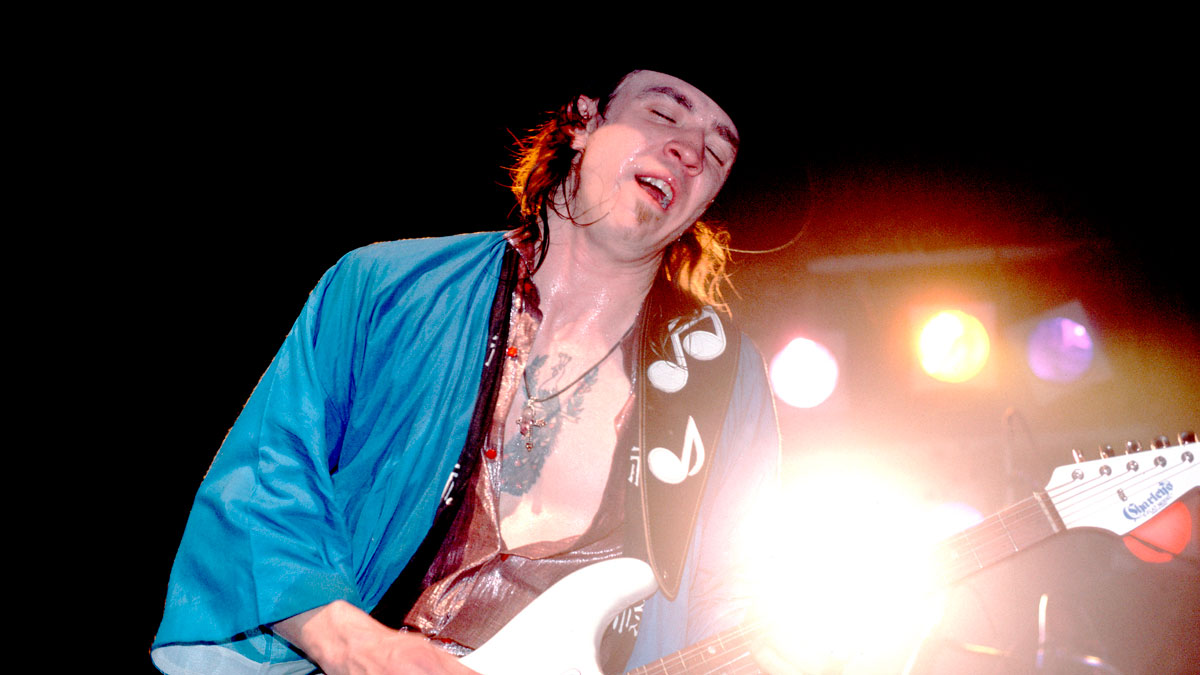
It’s crazy enough that, in the synth-happy early ’80s, Stevie Ray Vaughan had a top-20 hit with a Strat-fueled, 12-bar-blues shuffle called Pride and Joy. Even more bizarre is that, that same year, his raunchy Albert King–inspired bends graced a bona-fide mega-hit, David Bowie’s jittery Let’s Dance, which spent a solid three weeks at the top of the charts.
Let's Dance – and the album of the same name – is notable because it served as the world’s introduction to Vaughan’s dynamic fretwork. Vaughan met Bowie at the 1982 Montreux Jazz Festival in Switzerland. After SRV's performance, Bowie was so impressed that he later said, “[He] completely floored me. I probably hadn't been so gung-ho about a guitar player since seeing Jeff Beck with his [pre-Yardbirds] band, the Tridents.“
Of Bowie, Vaughan said, “To tell you the truth, I wasn't very familiar with David's music when he asked me to play on the sessions... David and I talked for hours and hours about our music, about funky Texas blues and its roots. I was amazed at how interested he was.“
Let's Dance raised eyebrows, expectations and bank accounts for all involved.
Vaughan plays lead guitar on several Let's Dance tracks, including two of the album's many mega-hits (Let's Dance and China Girl), but guitar-wise, the best of the bunch is the less-famous Cat People (Putting Out the Fire).
It's got the album's healthiest serving of SRV: he solos in the middle, adds Albert King-style bends throughout and also solos near the end of the song.
SRV was slated to hit the road with Bowie to promote Let’s Dance in May 1983 – but Texas Flood was about to come out. The Bowie tour would keep him on the road for a year, keeping him from promoting his own album. Bowie’s management decided to let Vaughan open select dates on the tour.
That sounded fine to SRV. But shortly before the tour began, Bowie’s management reneged. Not only would they not allow Double Trouble to open for Bowie, but Vaughan couldn’t give interviews about his album while on tour for Bowie. SRV never got to decide whether or not to stay with Bowie. Chesley Millikin, his manager, did it for him.
Moments before Vaughan boarded Bowie’s bus, the tour manager pulled his gear and bags off the vehicle. The bus took off without him, leaving SRV on the sidewalk with no idea what to do next.
SRV talks briefly about the circumstances surrounding his unceremonious exit in a 1986 interview on a New Zealand TV show, which you can watch below. The Bowie chat starts at the 1:20 mark.
“It stopped because Double Trouble was really never ever included on the shows,“ a clearly hurt Vaughan explains. “It was just a lot of bullshit. He [Bowie] just wanted me to play with him. So I didn't go.“
Of course, we all know what happened next. With his new freedom, Vaughan focused his attention on promoting Texas Flood and turned the loss into a gain, setting him on the path to becoming a blues guitar hero.
If it weren't for the Stratocaster master's untimely death in 1990, who knows whether SRV and Bowie would reunite down the line. Yet, regardless of what went down over the tour, we have the Thin White Duke to thank for bringing one of the all-time guitar greats to the wider world of music.







